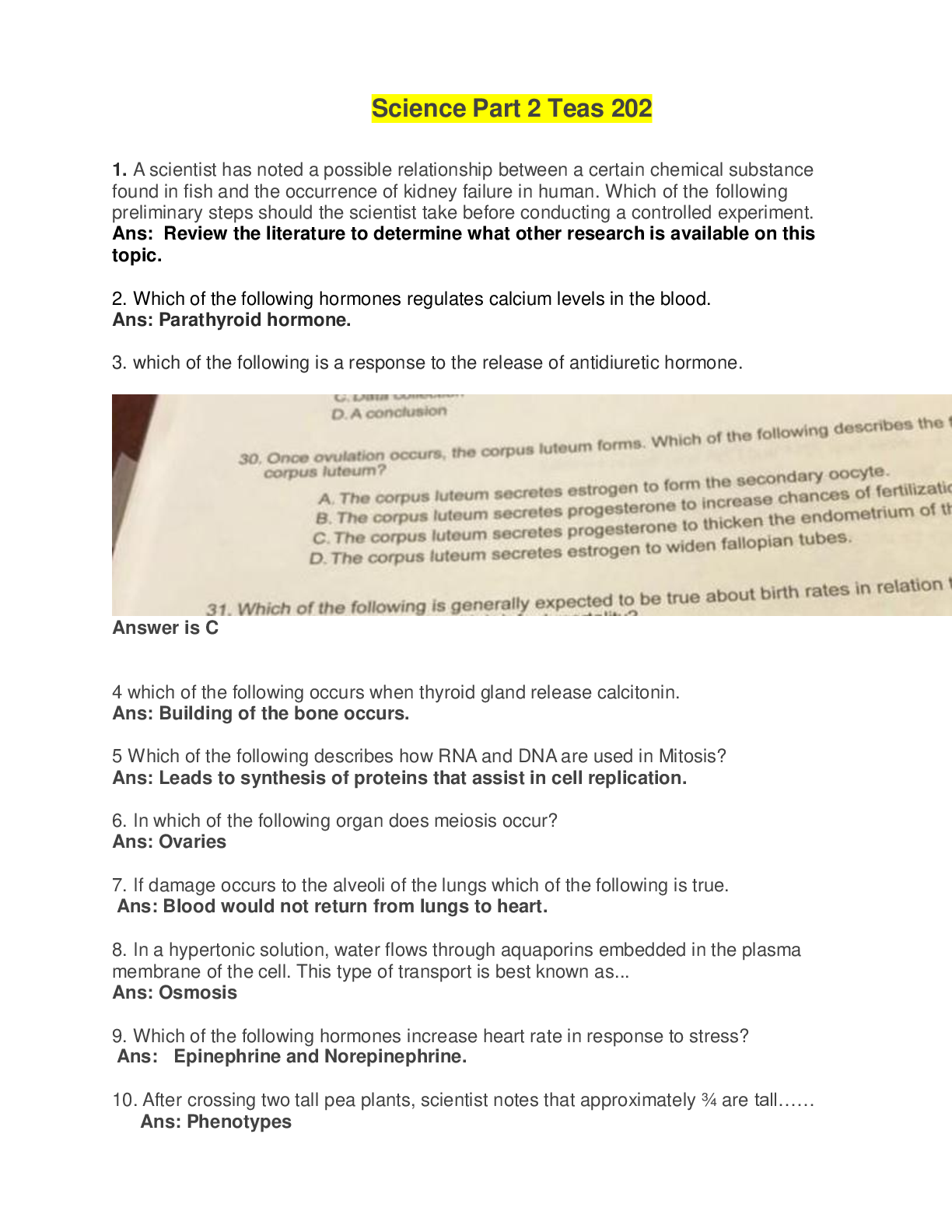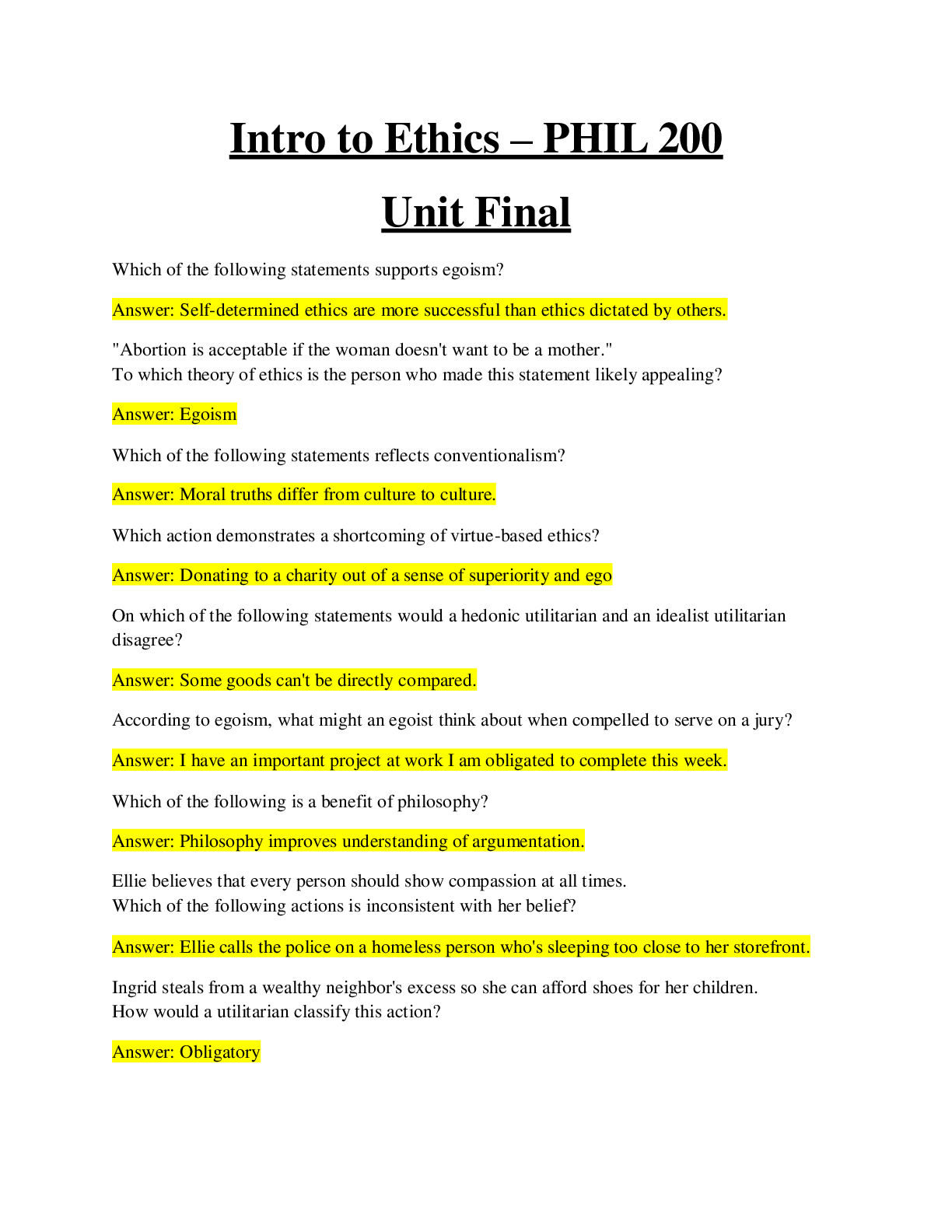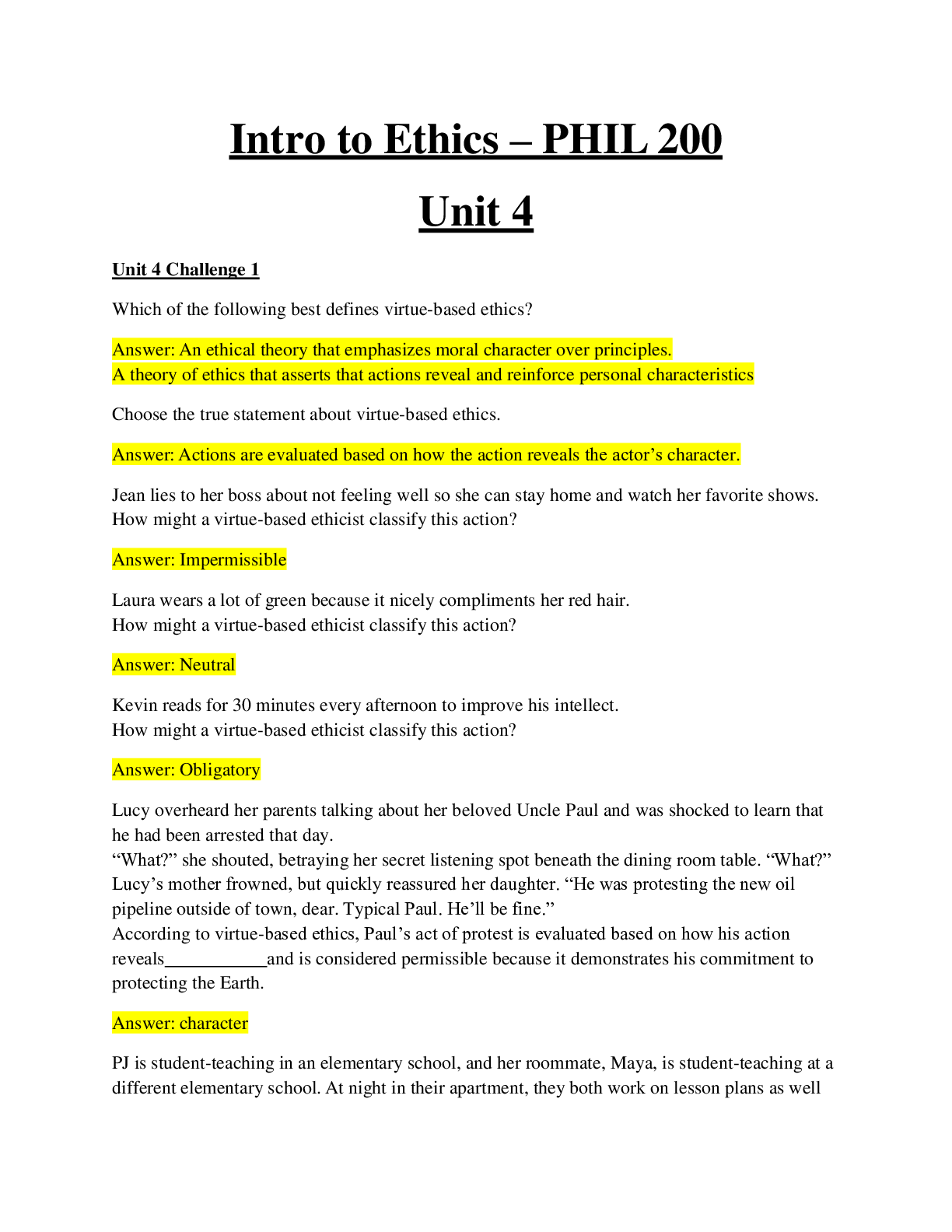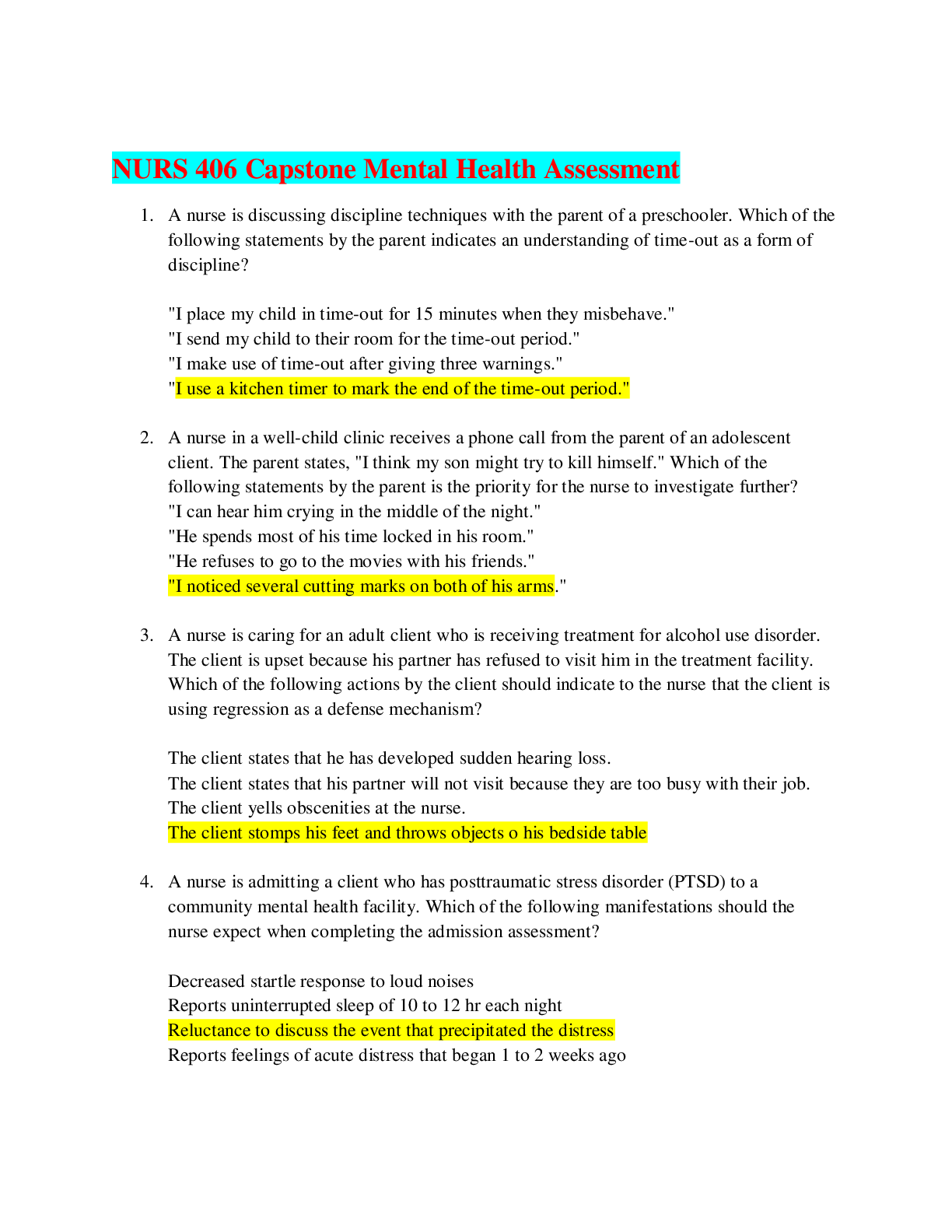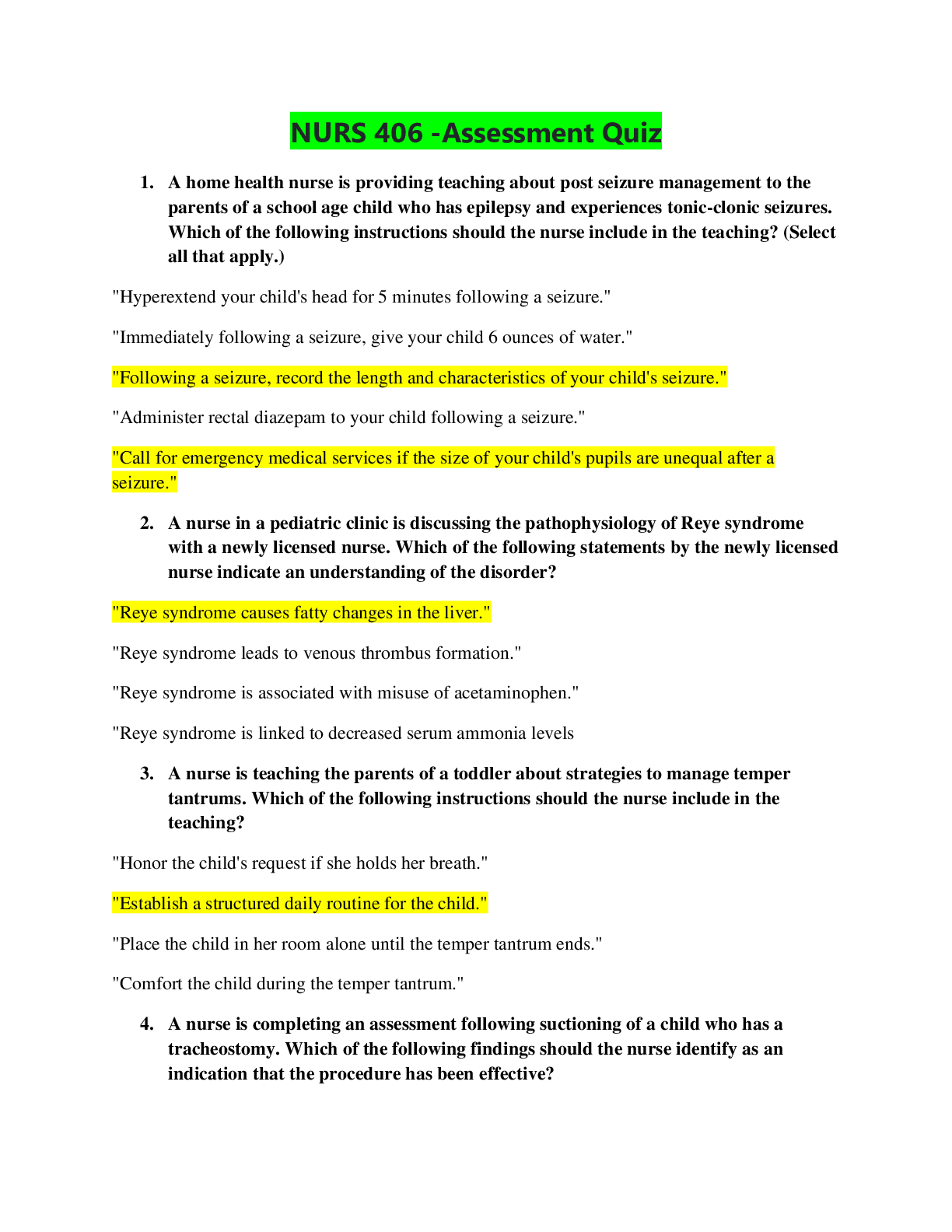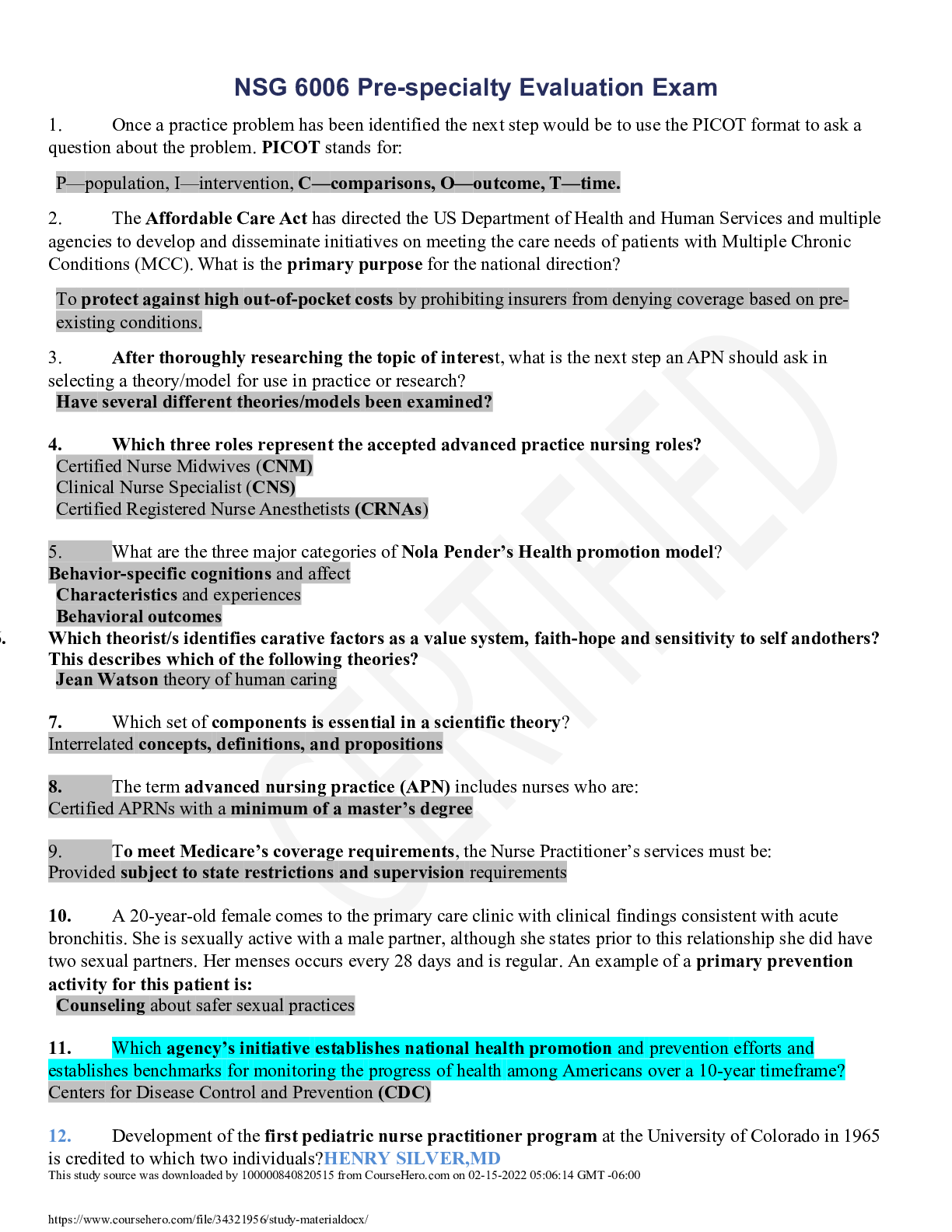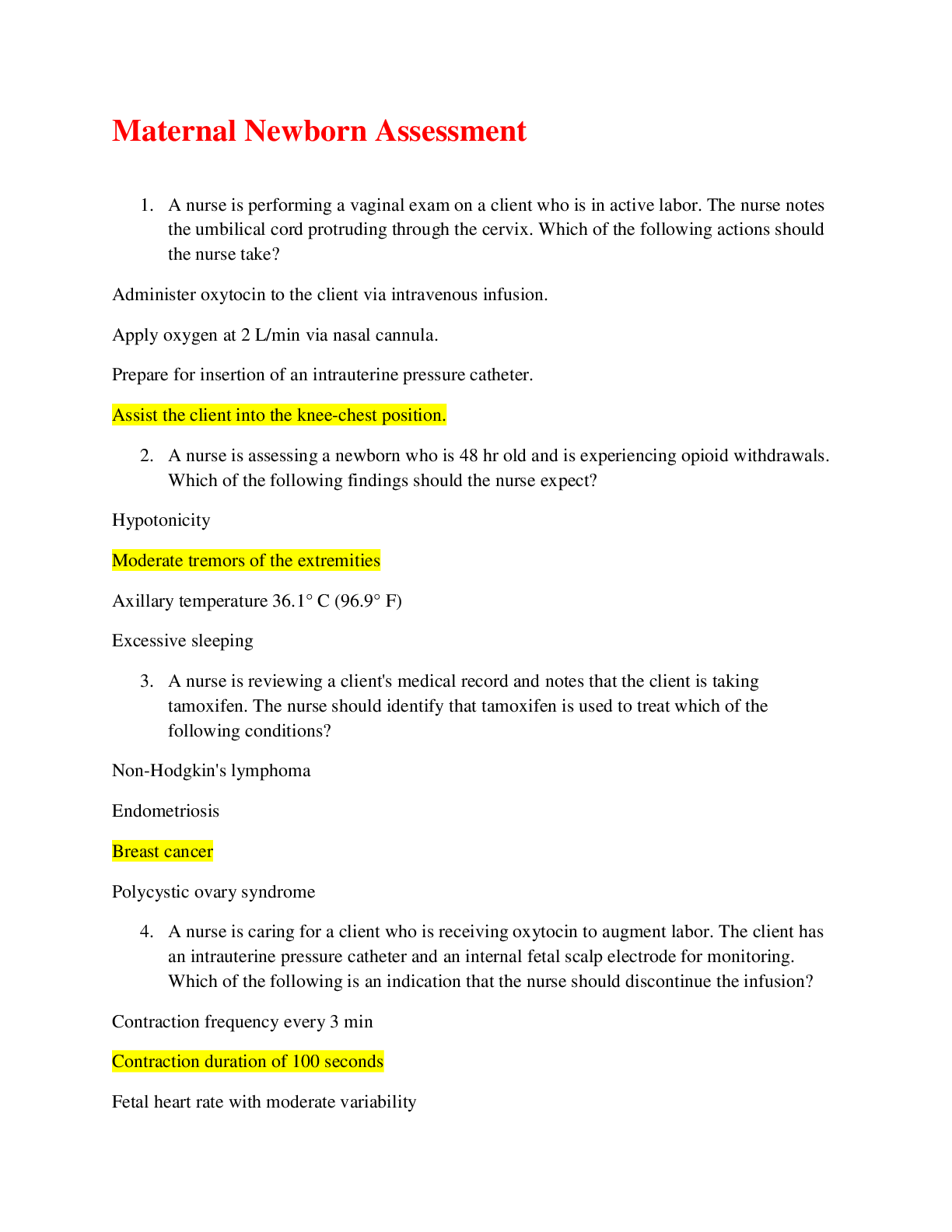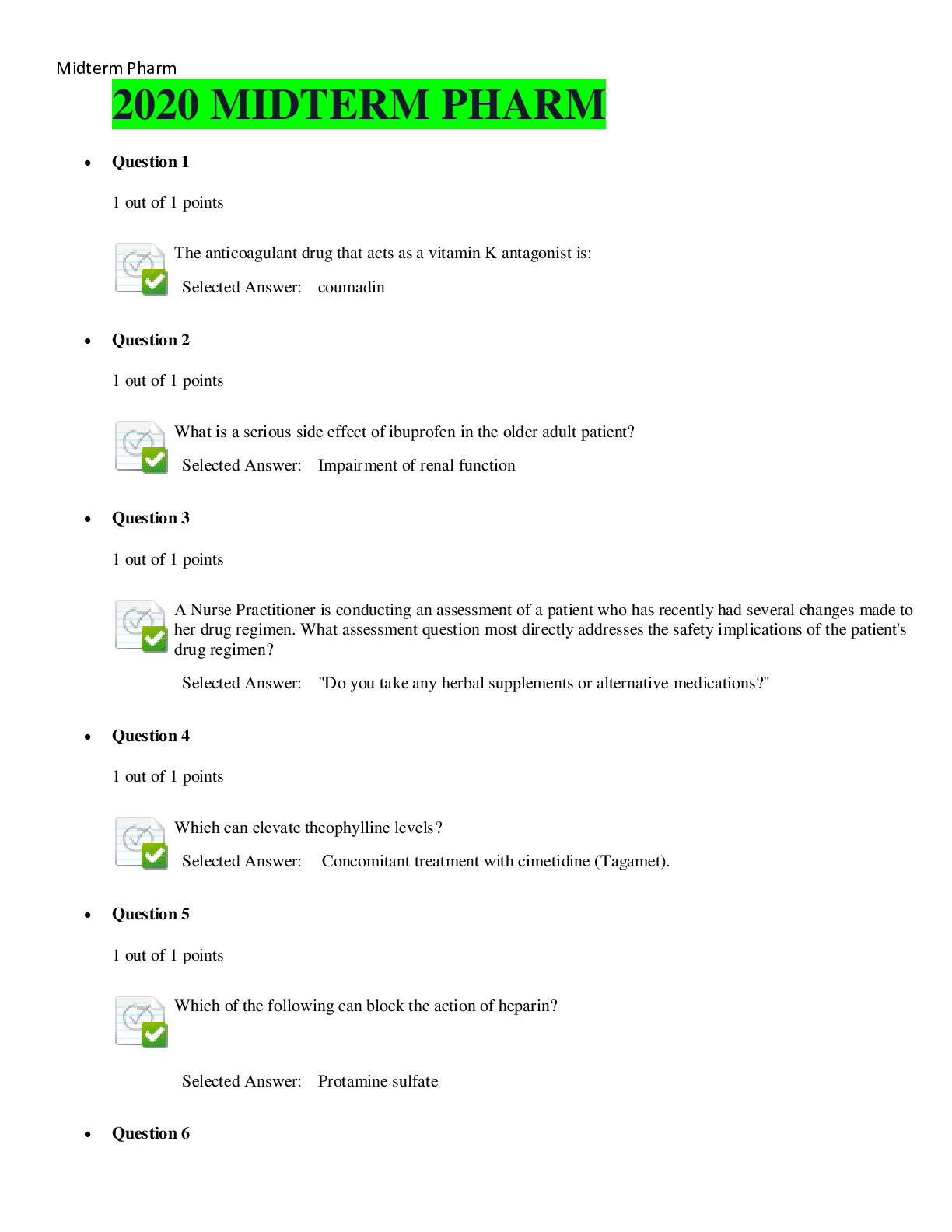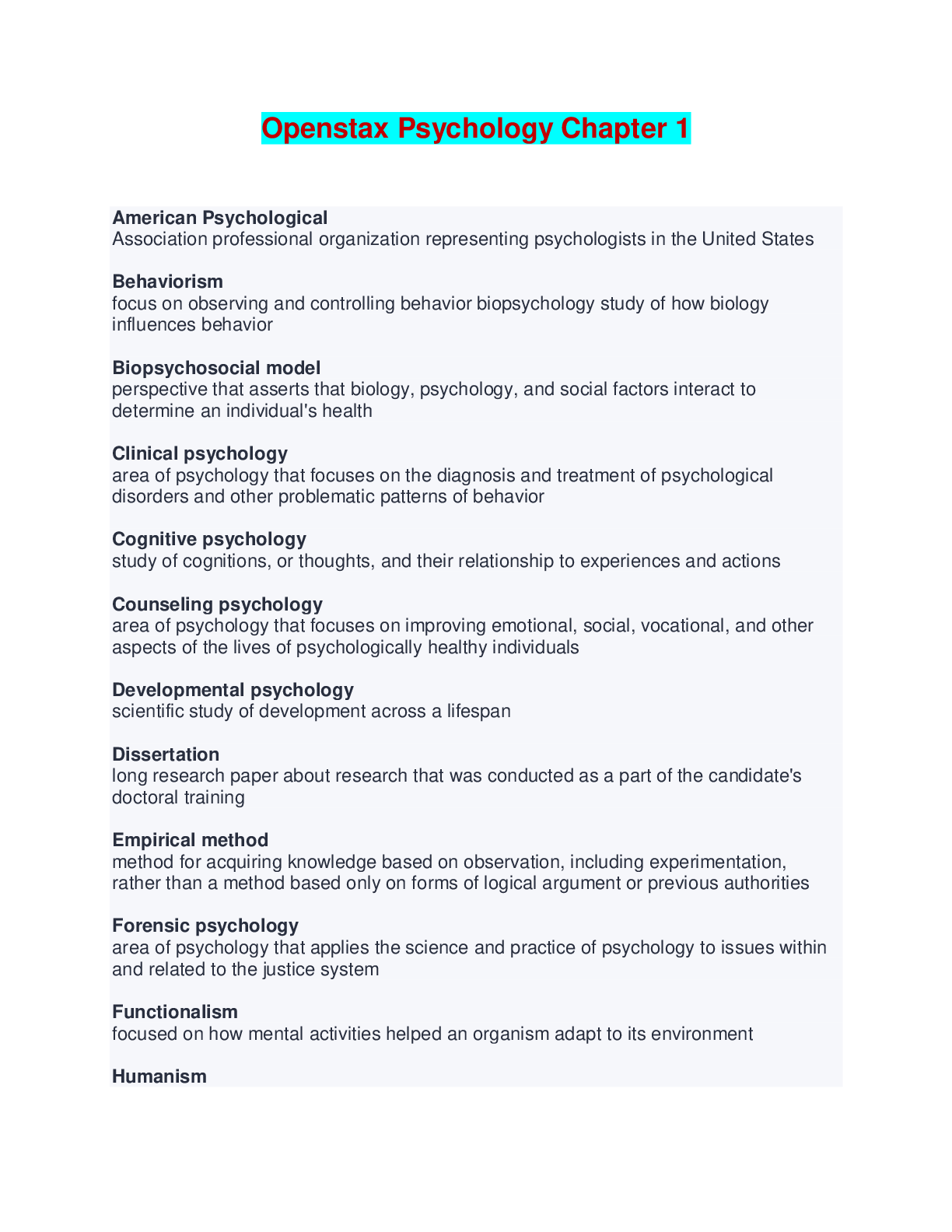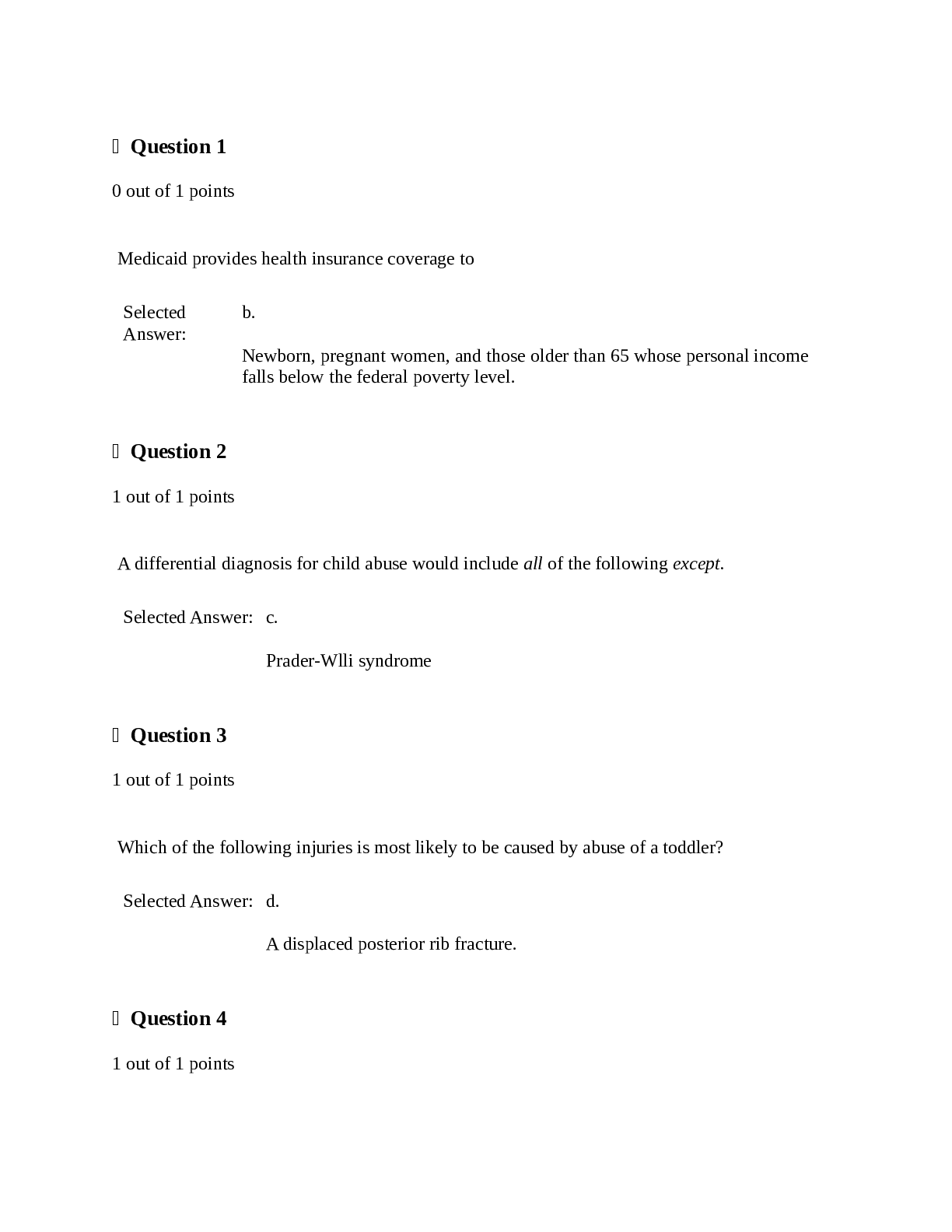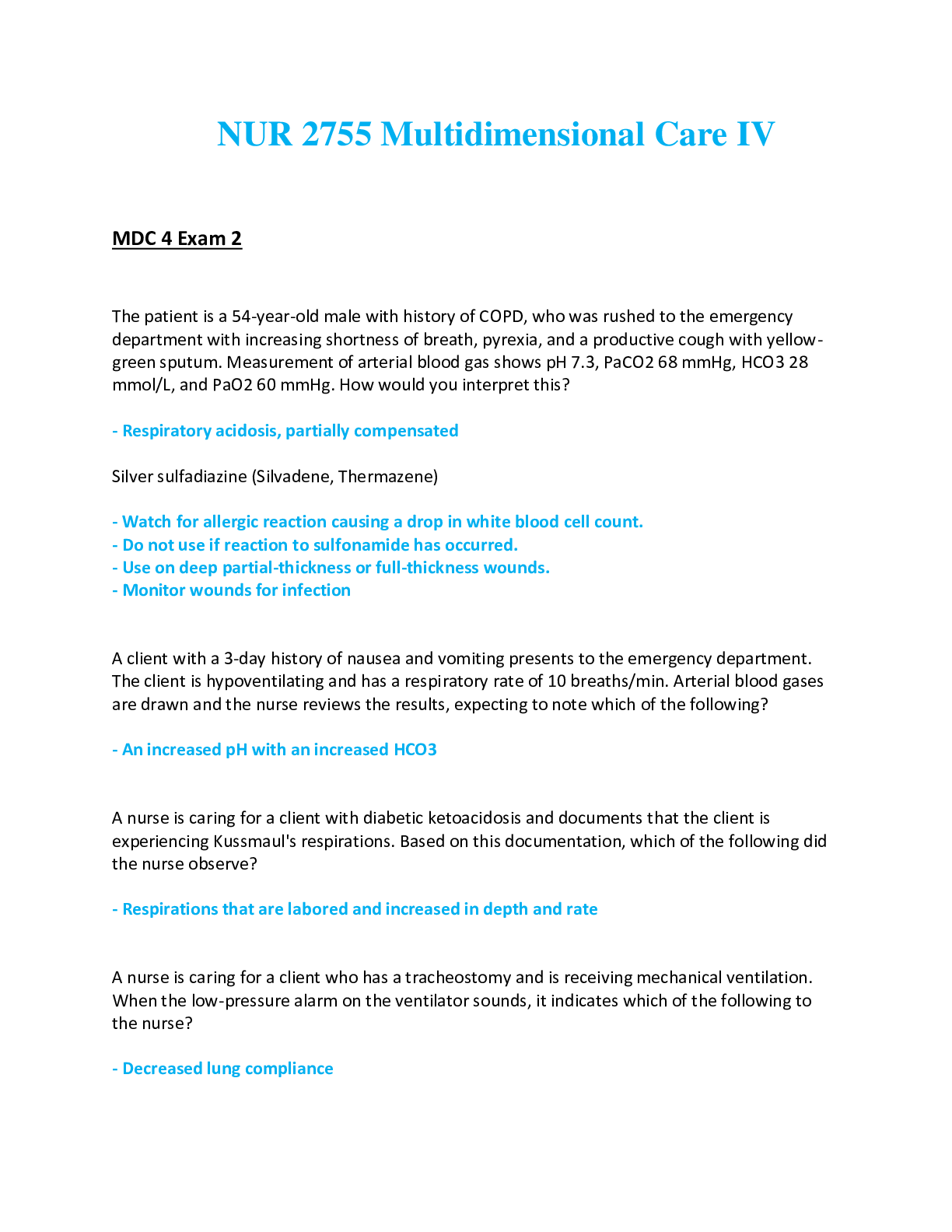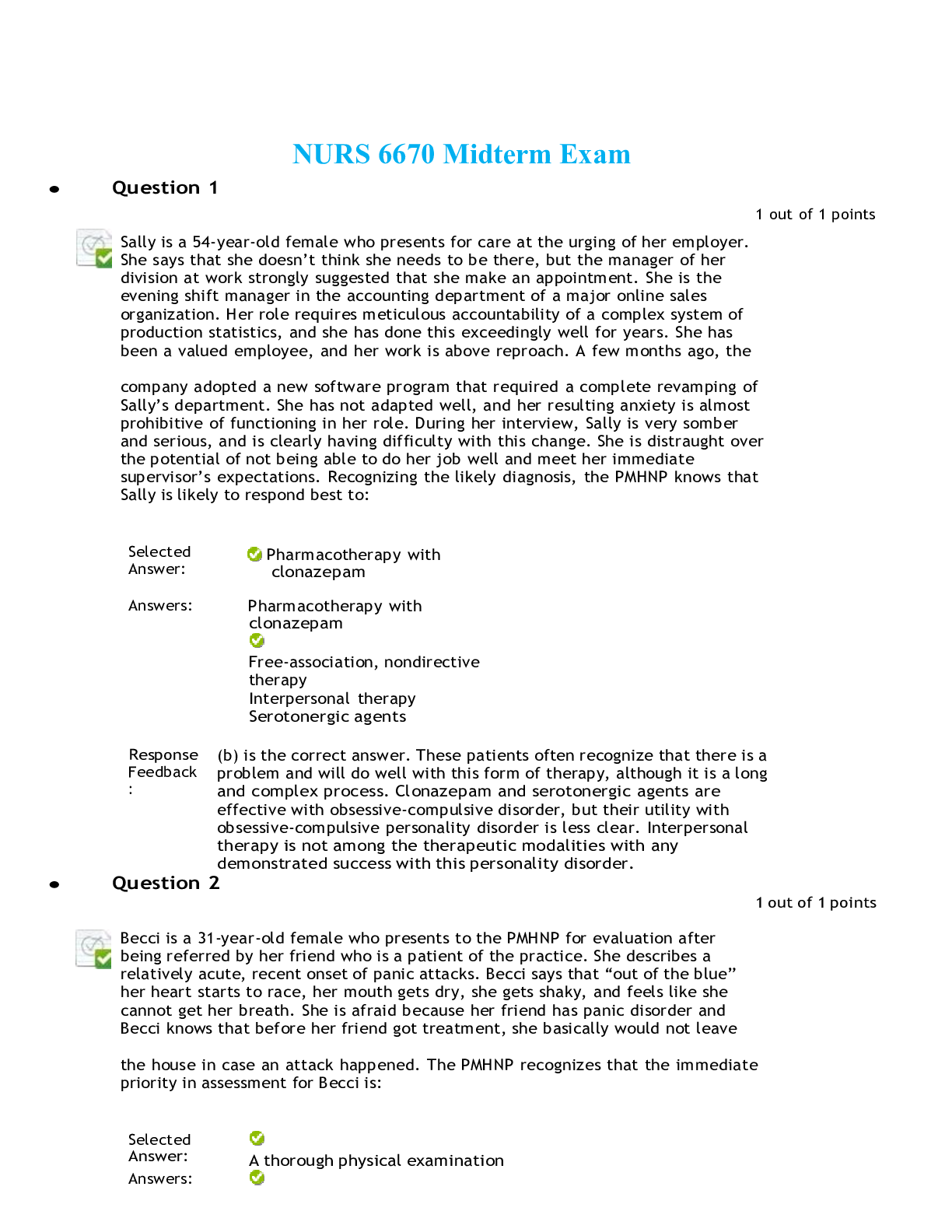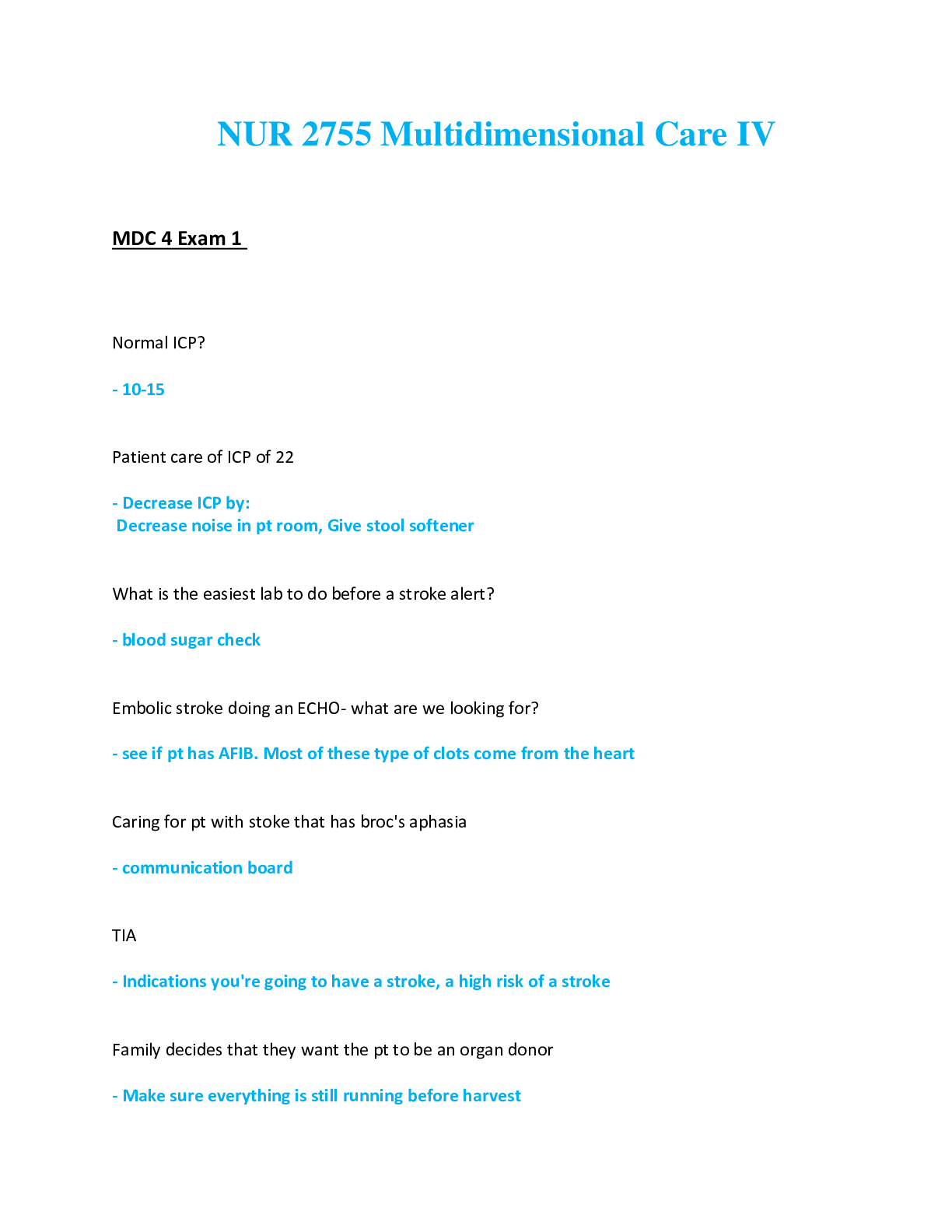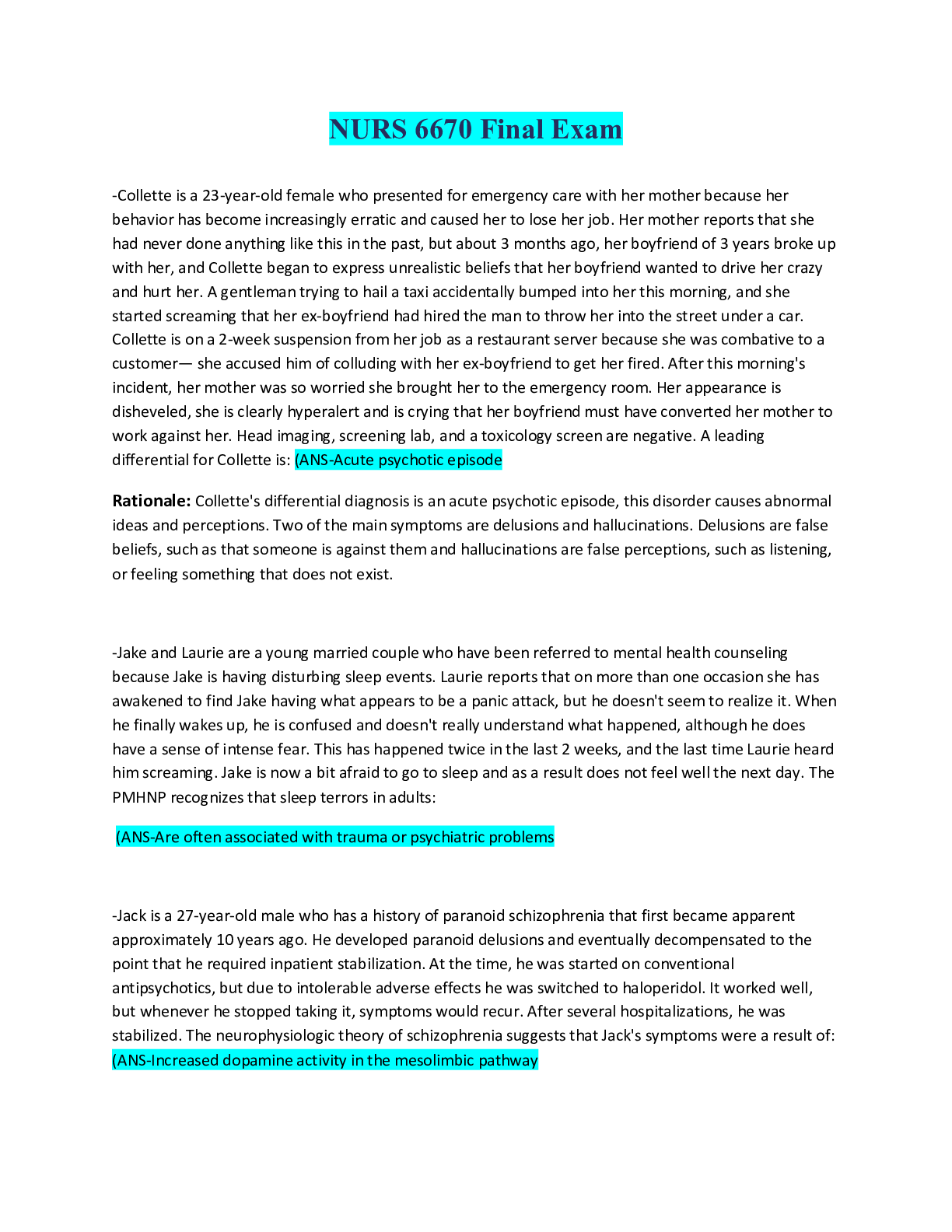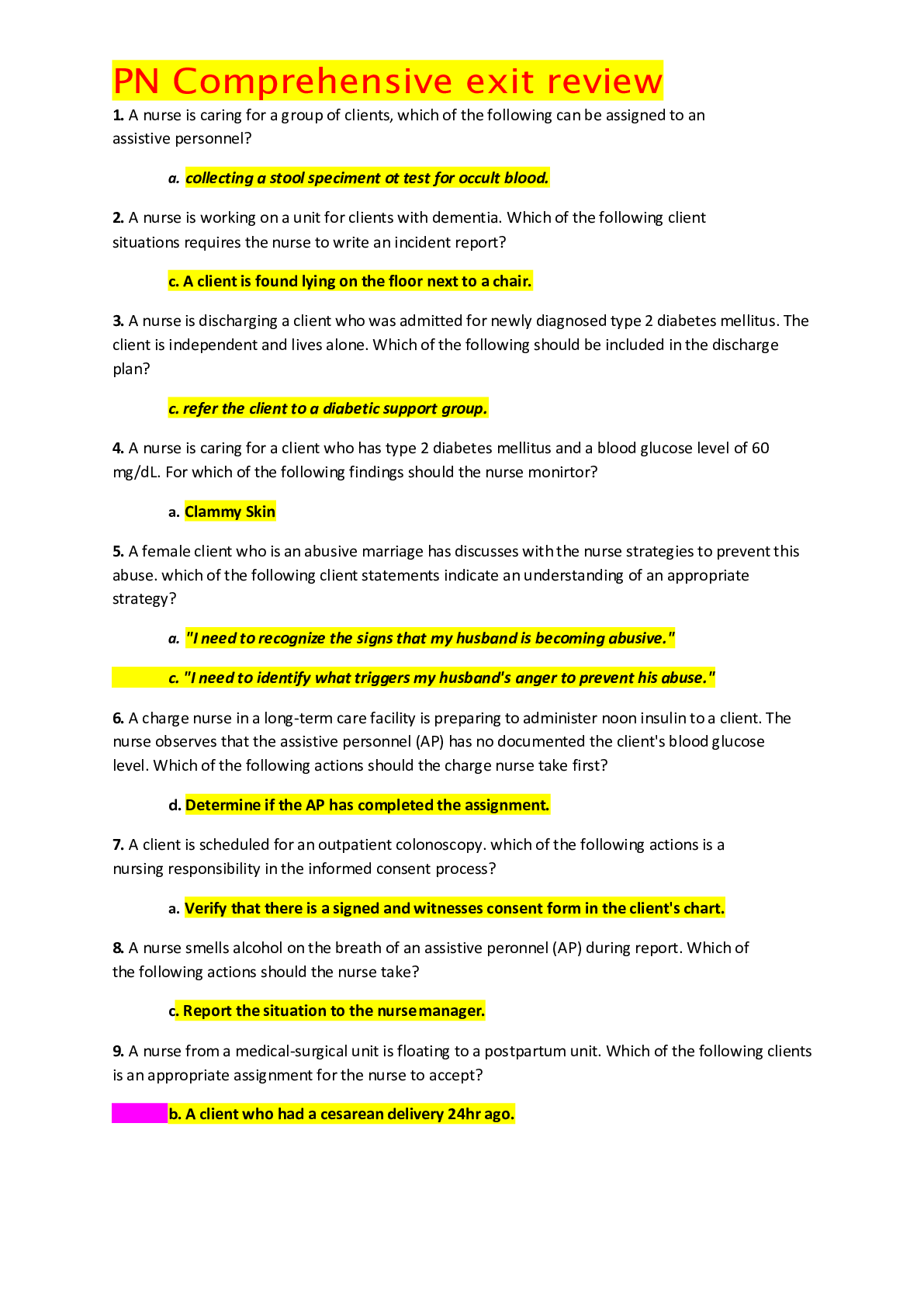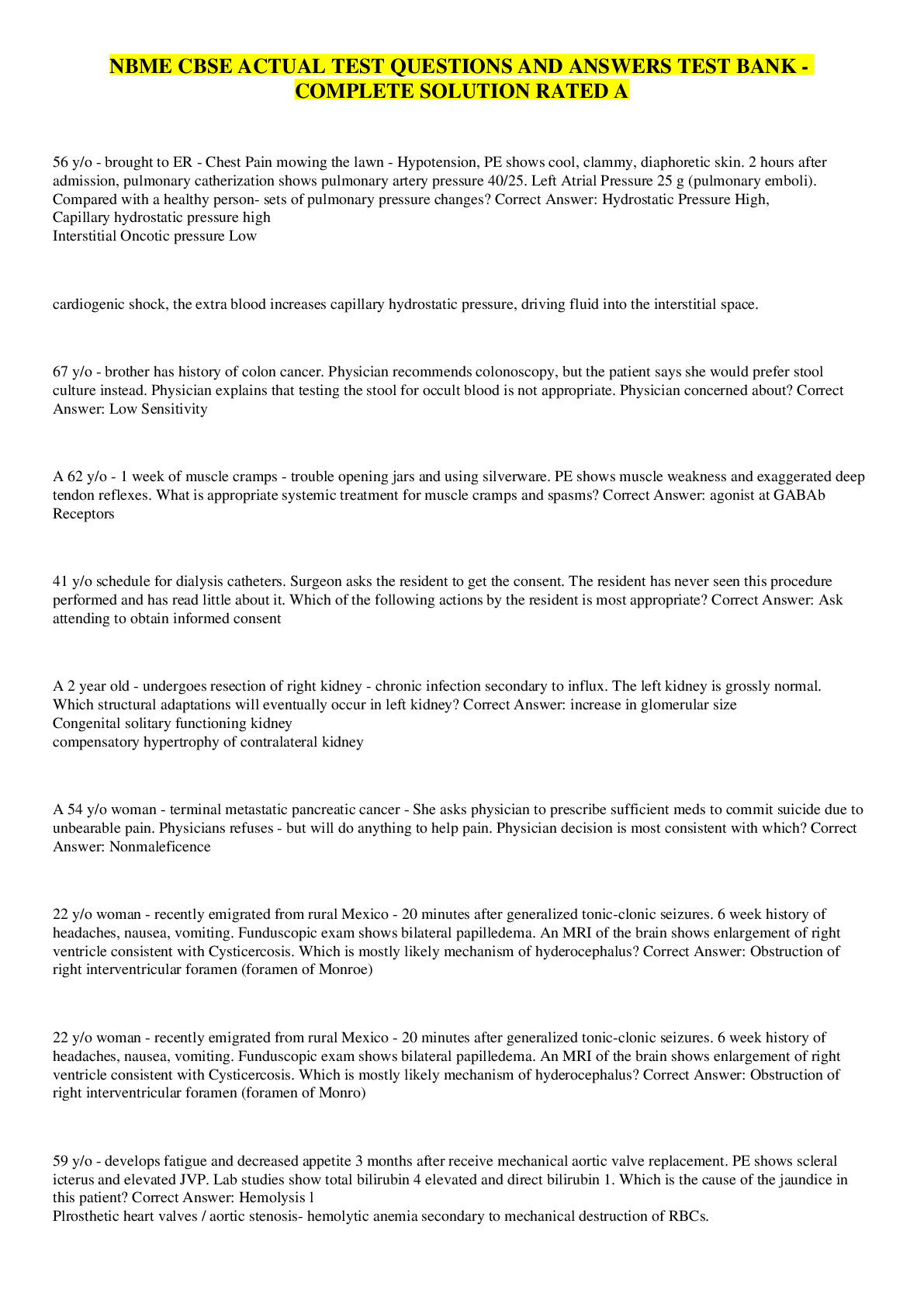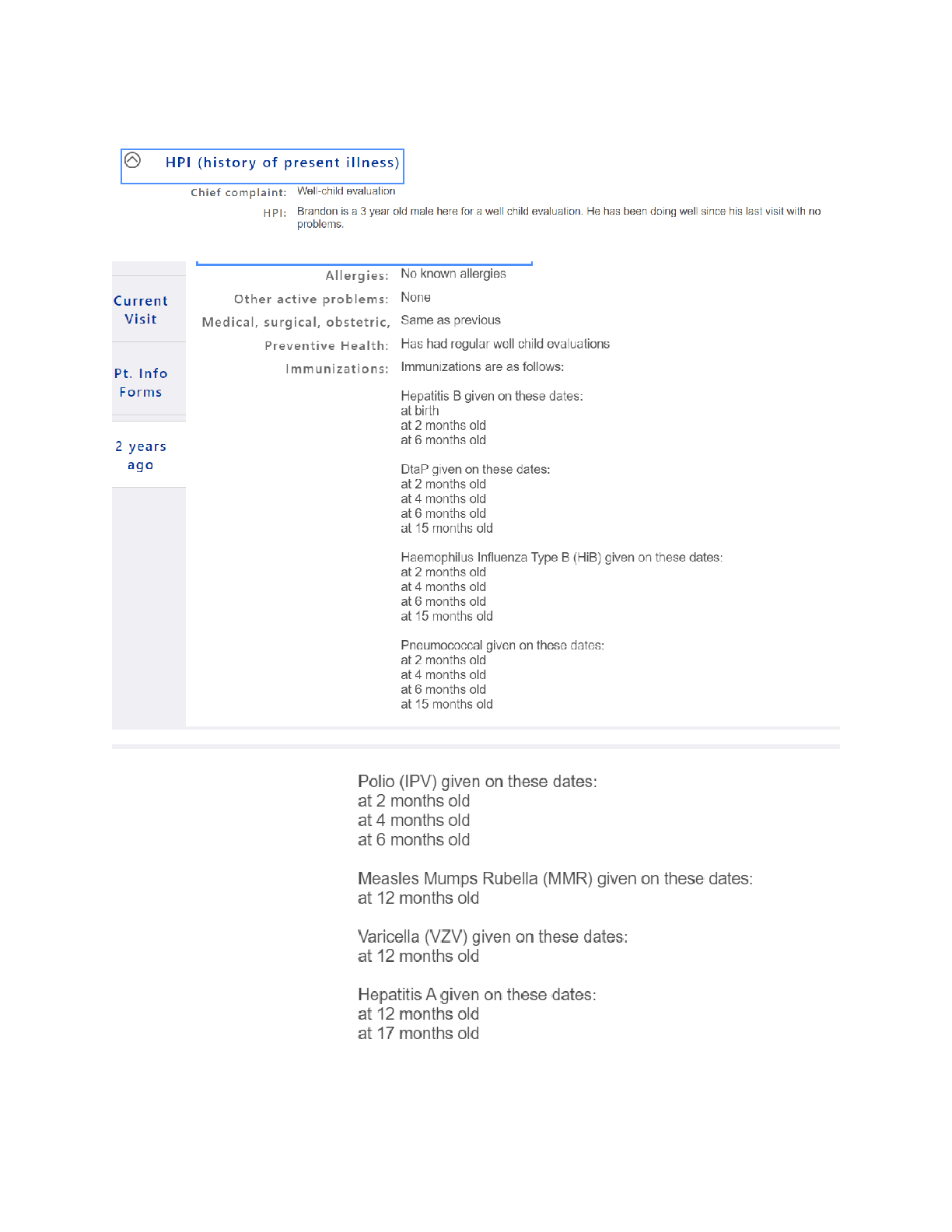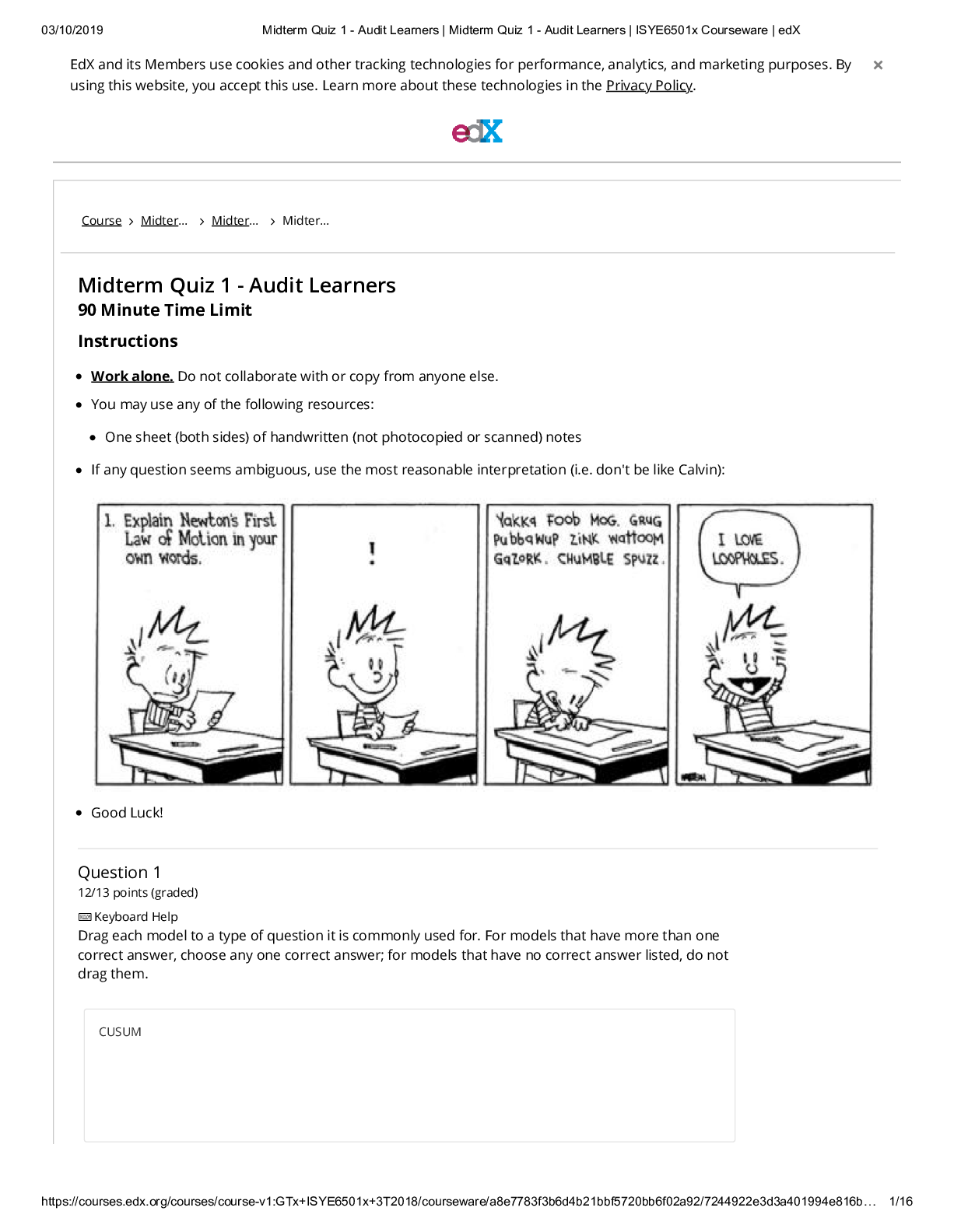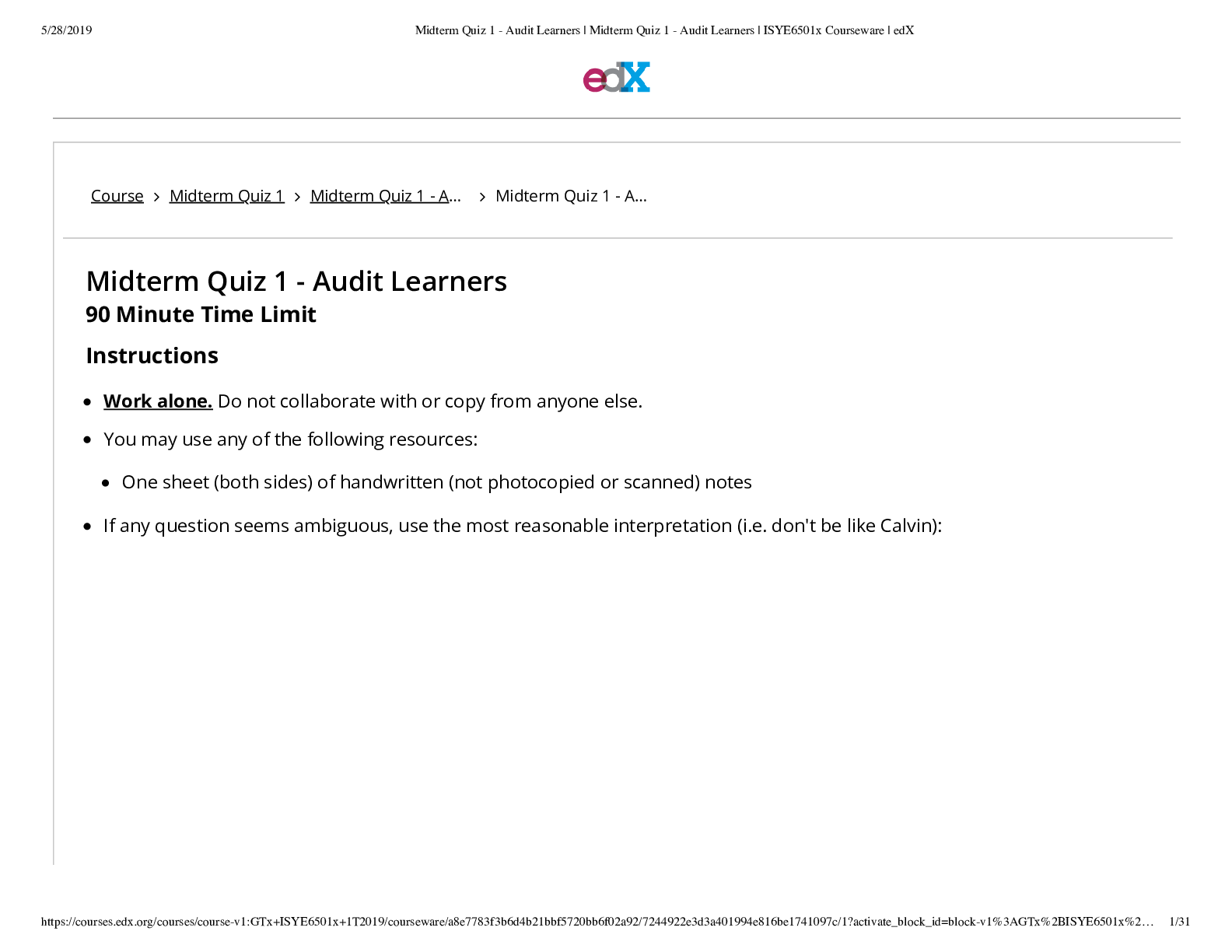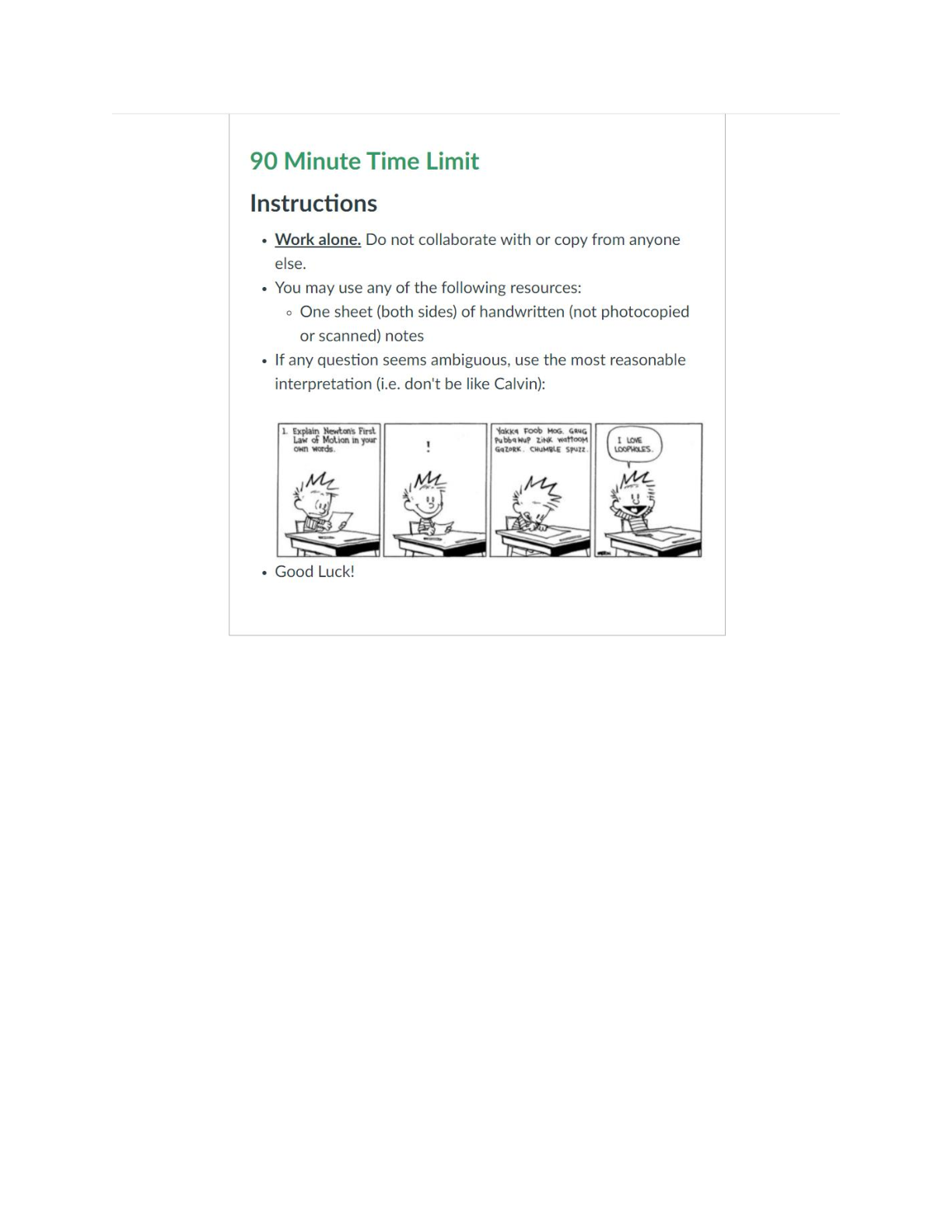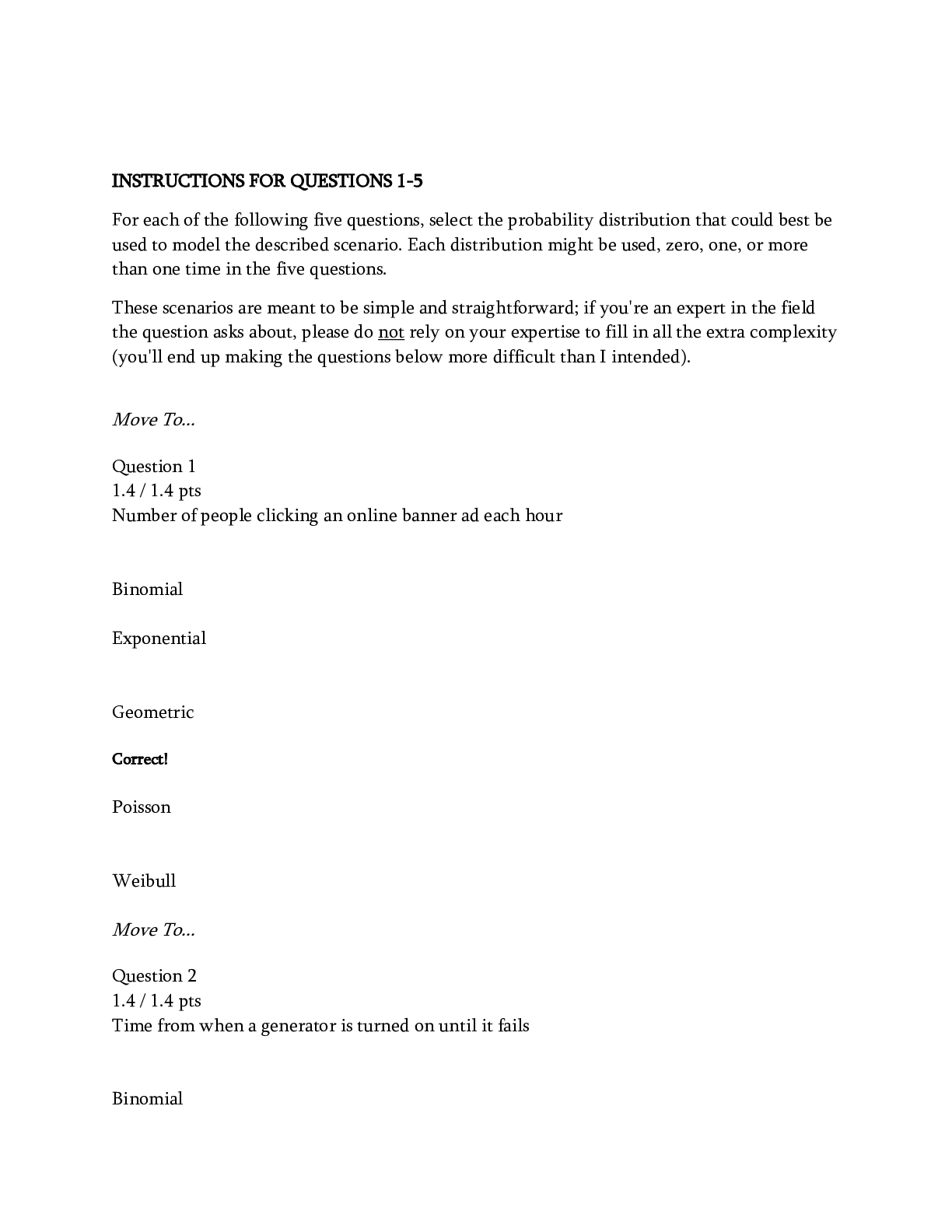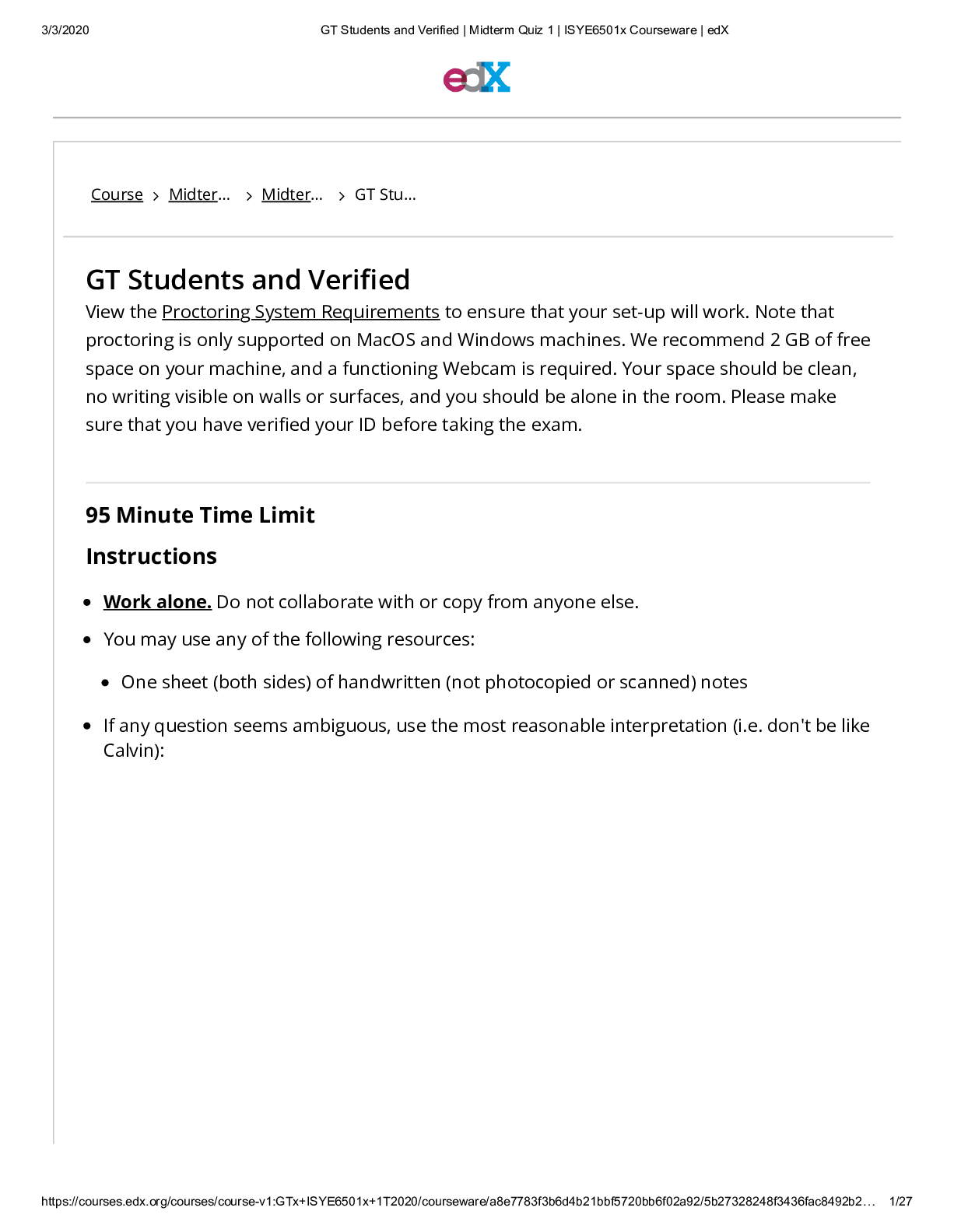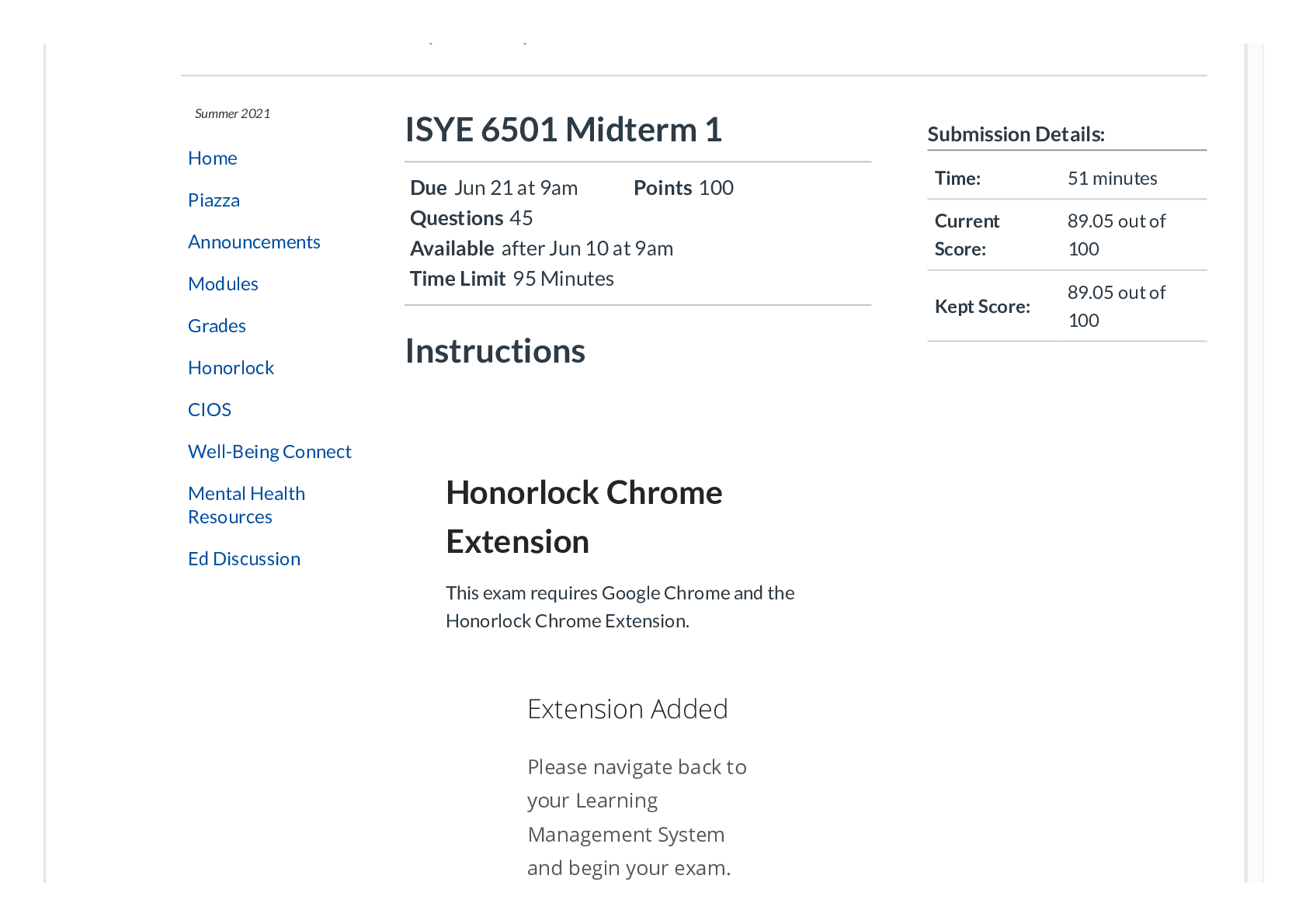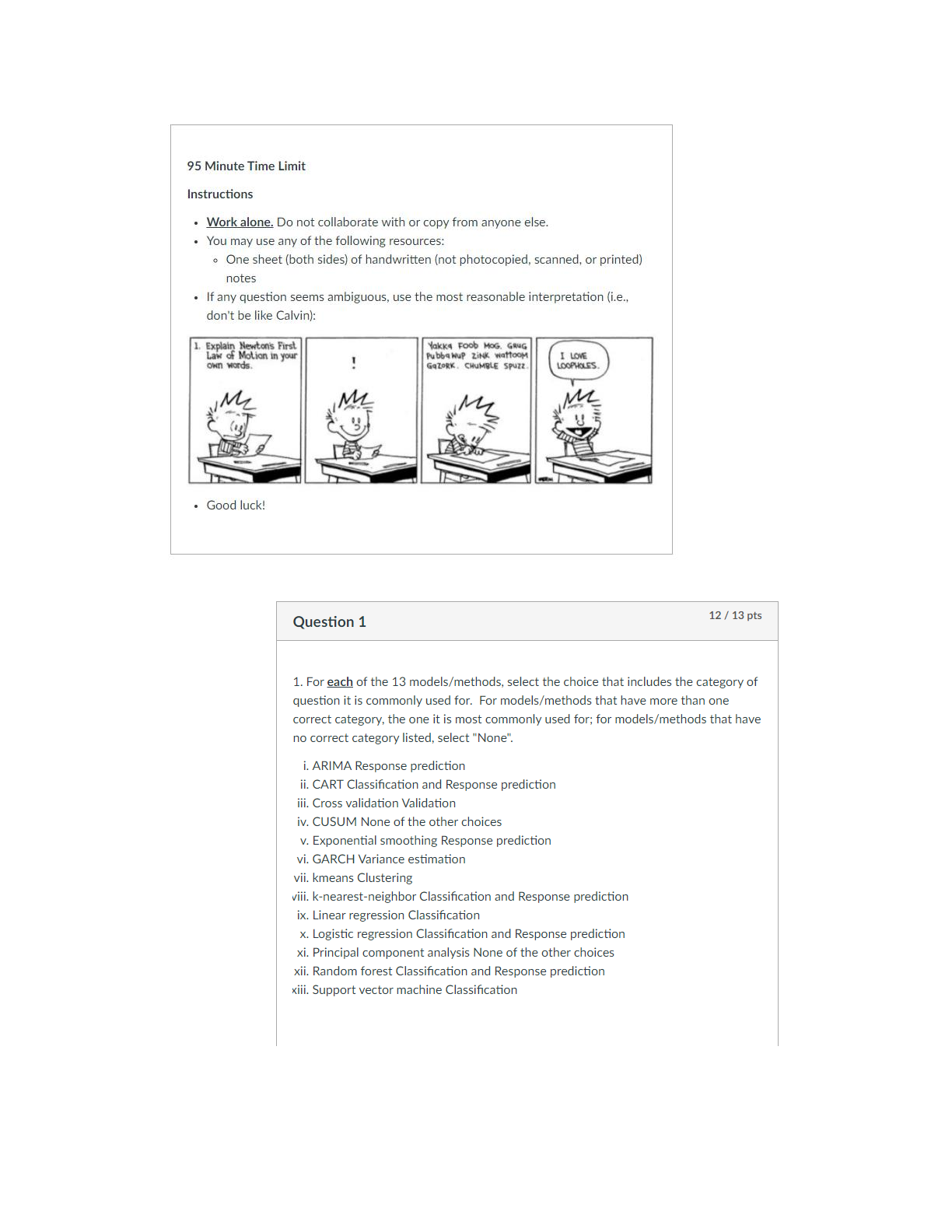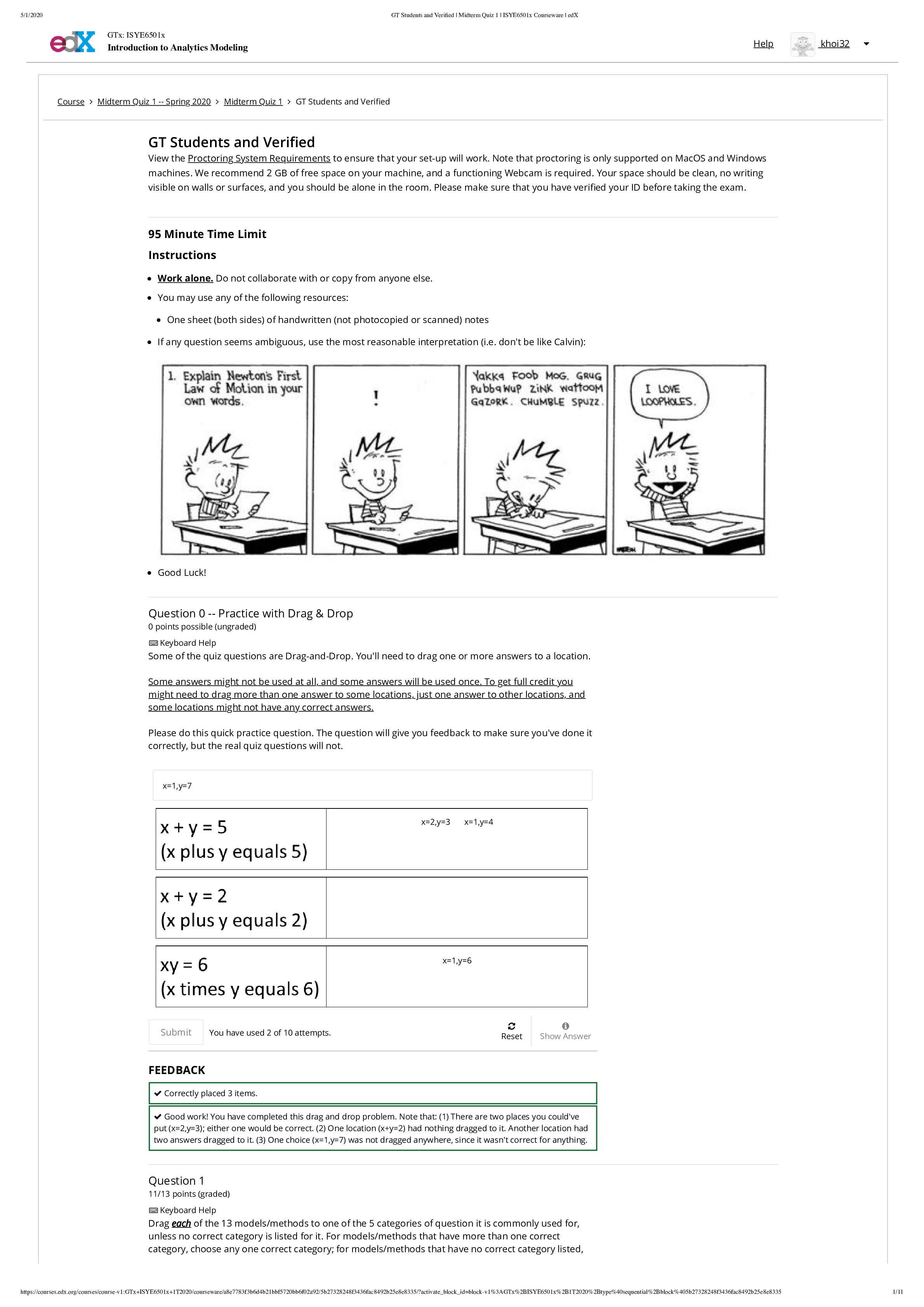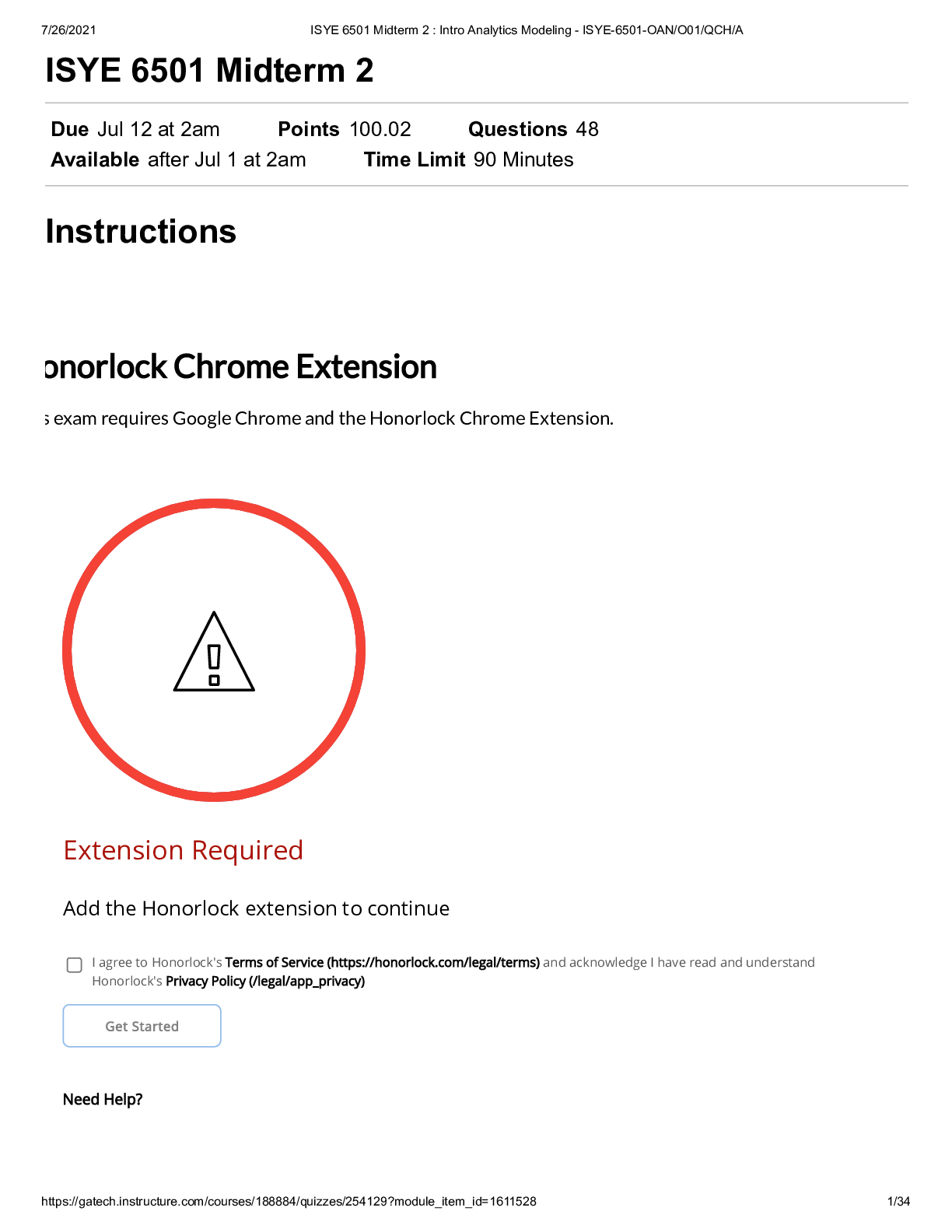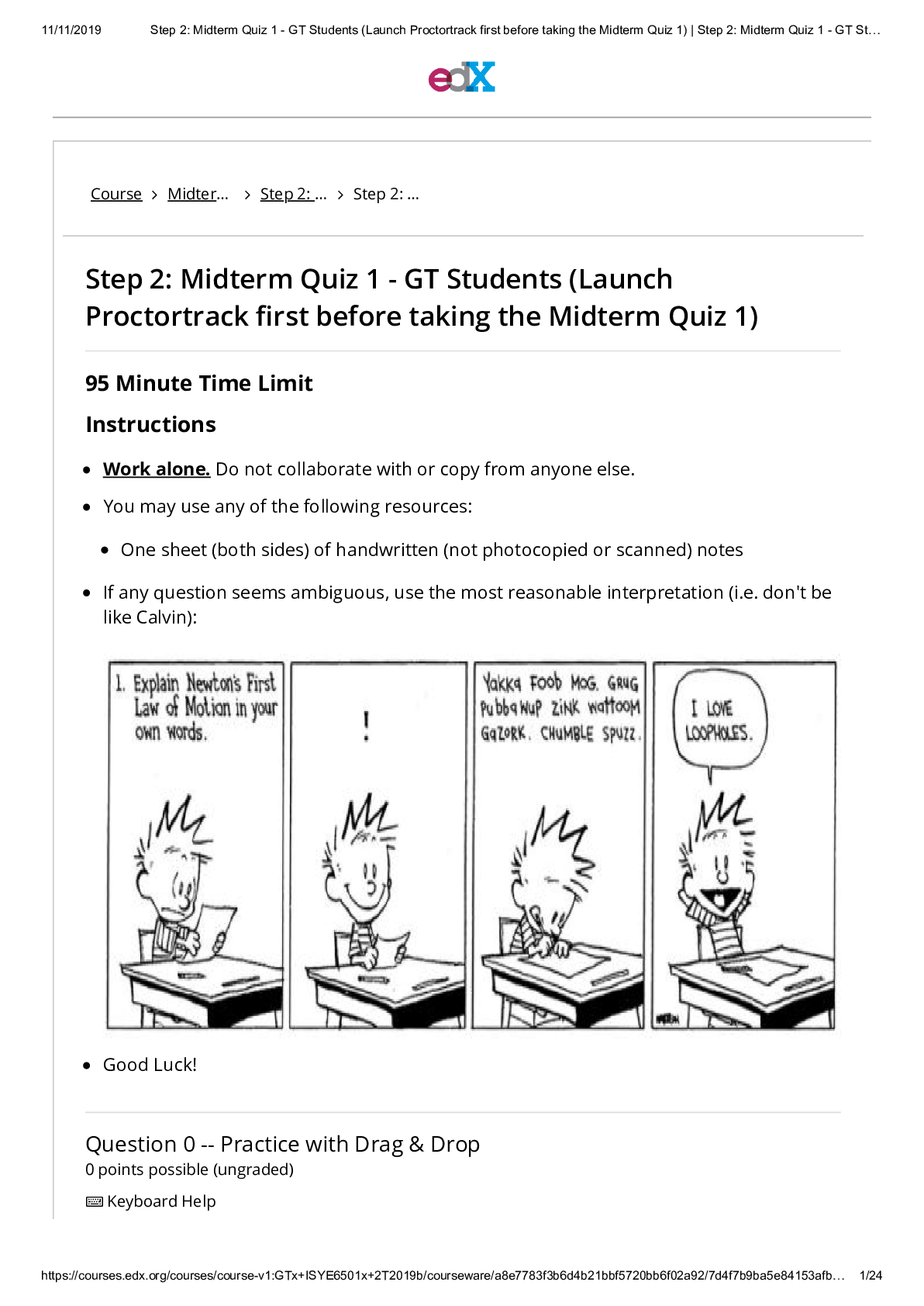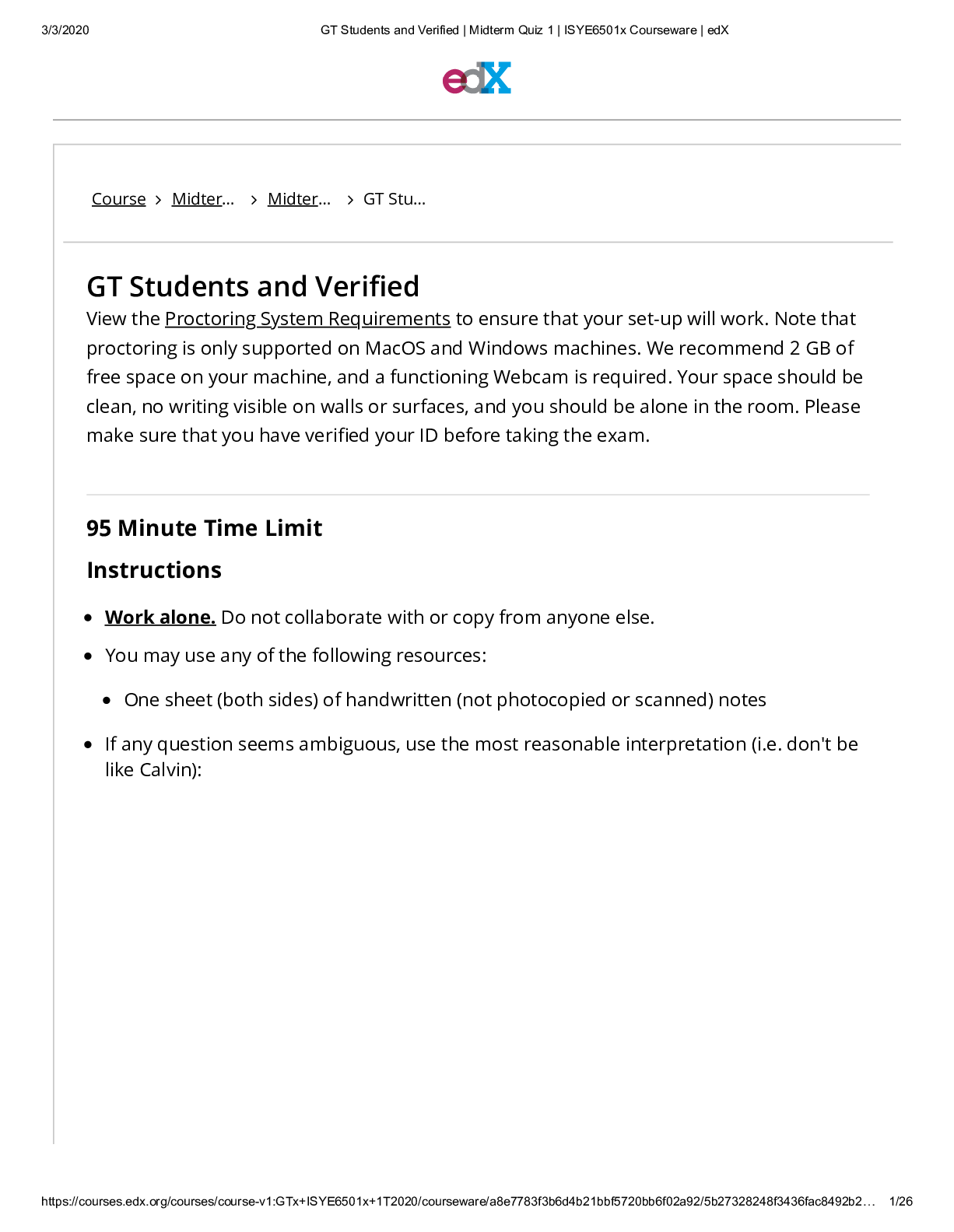BIO 101 TEAS Test Study Guide: Science, A&P - Complete Solution
Document Content and Description Below
TEAS Test Study Guide: Science; Bryant & Stratton College - BIOLOGY 110 TEAS Test Study Guide: Science Cell Cycle · Mitosis = “daughter cell” exact replica · Interphase (G1, S, G2) · Prophase �... � Metaphase · Anaphase · Telophase · Cytokinesis · Meiosis = “daughter cells” different genetic coding · Only happens in gametes* · 1st phase · chromosomes cross over · genetic material exchanged · tetrads of 4 chromatids formed Homologous pairs of chromatids are separated and go to different poles 2 cells go through 2nd cell division 4 daughter cells with different sets of chromosomes · Haploid : contains half genetic material of parent cell • Zygote- controls cell differentiation Tissues groups of cells Muscle, nerve, epithelial, connective 1. Epithelial: (joined together tightly) ex. Skin 2. Connective: (dense, loose, or fatty) ex. Bone tissue, cartilage, tendons, ligaments, fat, blood, lymph Protects & binds body parts a. Cartilage: cushions & provides structural support i. Fibrous b. Blood: transports oxygen to cells & removes waste / ALSO carries hormones & defends against disease c. Bone: (hard) produces red blood cells 2. Muscle: Support & move body a. Smooth b. Cardiac c. Skeletal 3. Nervous: ex. Brain, spinal cord, & nerves a. Neurons- control responses to changes in environment Organs groups of tissues ex. Heart = muscle tissue in myocardium; connective tissue in blood; nervous tissue for heart rate; epithelial tissue in membranes Organ Systems groups of organs 1. Integumentary (Exocrine system) a. Skin i. Sebaceous glands sweat glands ii. Hair iii. Nails b. Protection i. Protects body from pathogens c. Secretion i. Secrete oil d. Communication i. Sensory receptors send info. about pain, touch, pressure, and temperature LAYERS OF THE SKIN 1. Epidermis a. Most superficial layer of skin b. Epithelial cells **Does not contain any blood vessels c. Stratum basale i. deepest portion ii. single layer of cells iii. keratinized 1. waxy protein waterproofs skin 2. Dermis a. Mostly connective tissue b. Blood vessels, sensory receptors, hair follicles, sebaceous glands, sweat glands c. Elastin and collagen fibers 3. Subcutaneous layer/ Hypodermis a. Connective tissue i. Binds skin to muscle b. Fat deposits cushion and insulate TEMPERATURE HOMEOSTASIS skin is involved in temperature homeostasis through sweat glands a. Controlled by negative feedback system a. Receptor i. Sensory cells in dermis of skin b. Control center i. Hypothalamus c. Effector i. Sweat glands, blood vessels, and muscles (shivering) ii. Evaporation of sweat cools body iii. Vasodilation of blood vessels release heat into environment to lower body temperature SEBACEOUS VS SWEAT GLANDS a. Both exocrine glands a. Secrete substances into ducts i. Through ducts to the surface of the skin 1. Sebaceous glands a. Holocrine glands i. Secrete sebum 1. Oily mixture of lipids and proteins b. Connected to hair follicles and secrete sebum through hair pore 2. Sweat glands a. Eccrine or apocrine glands i. Eccrine glands: not connected to hair follicles 1. Secrete salty solution 2. Forehead, neck, back 3. Activated by elevated body temperature ii. Apocrine glands 1. Secrete oily solution 2. Armpits, groin, palms, soles of feet 3. Activated by stress or anxiety ******CONTINUED!********************** [Show More]
Last updated: 1 year ago
Preview 1 out of 26 pages
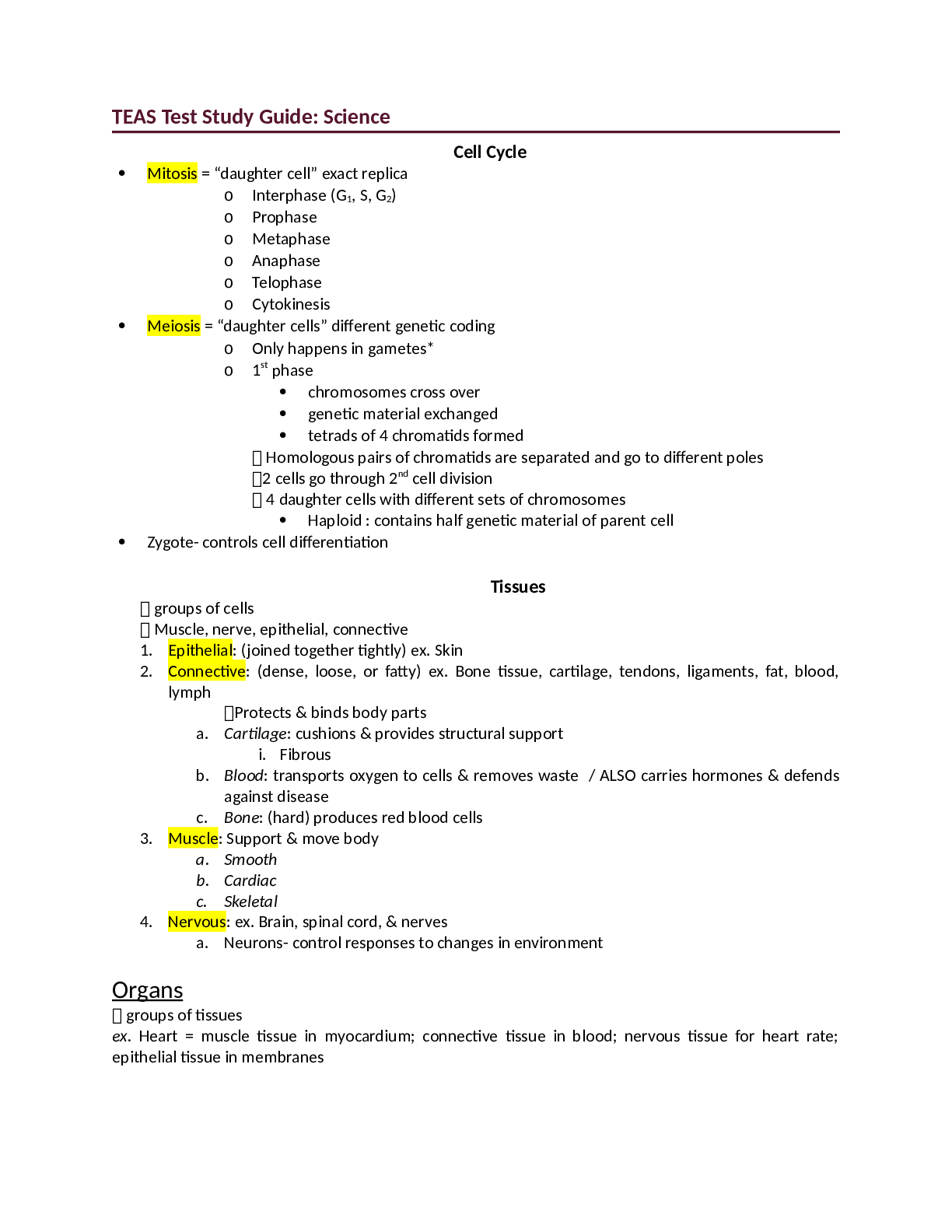
Reviews( 0 )
Document information
Connected school, study & course
About the document
Uploaded On
Aug 05, 2021
Number of pages
26
Written in
Additional information
This document has been written for:
Uploaded
Aug 05, 2021
Downloads
0
Views
55
